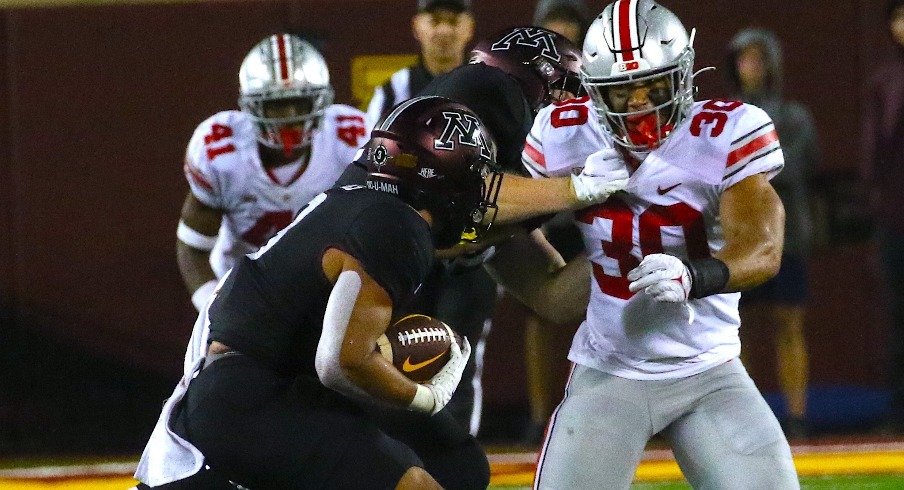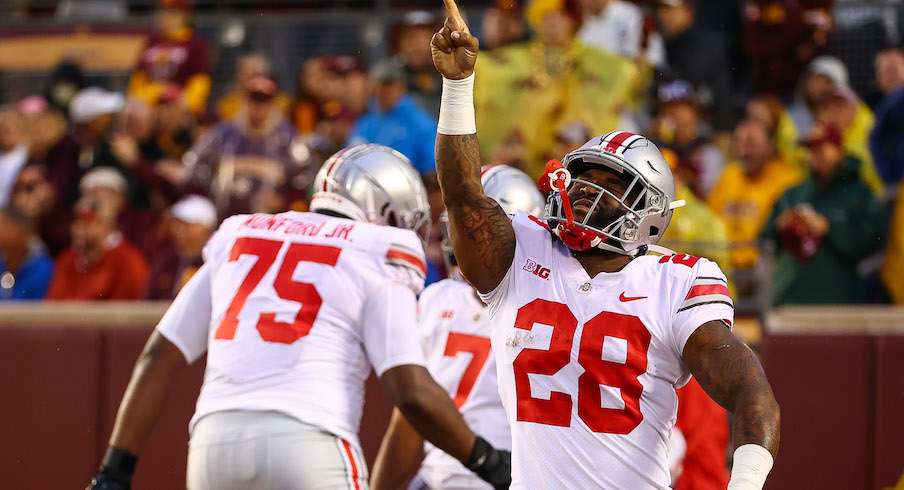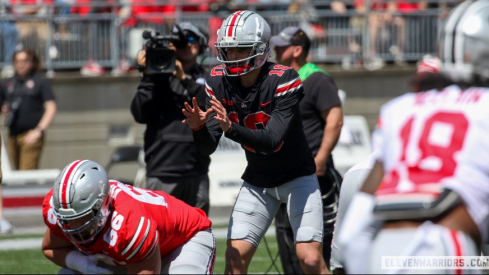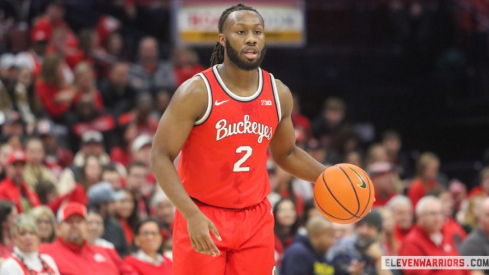“In the game of football, you have your ups and downs. Everything doesn’t go the way it’s supposed to." - C.J. Stroud
At the time, it wasn't so impressive. Mo Ibrahim had 114 rushing yards at the half, allowing Minnesota to go into the locker rooms with the lead.
Here were the mighty Ohio State Buckeyes, fresh off an appearance in the CFP championship game, getting pushed around by someone named P.J.. Sure, the visitors would tally 35 second-half points and win by 14 (angering countless bettors nationwide), but, based on reactions across message board and social media, it would seem that half the state of Ohio was ready to insert Quinn Ewers in the third quarter or write Marcus Freeman the biggest check he's ever seen to come and take over the defense.
Then, eight of the top 25 teams lost over the weekend, Georgia and Clemson combined to score 13 measly points, and pretty much everyone in the top 10 outside of Alabama, Texas A&M, and Cincinnati failed to look their best in week one. All of a sudden, winning by two touchdowns on the road, at night, against a veteran, conference opponent on national TV doesn't seem so bad.
As the Buckeyes now prepare for their most anticipated matchup of the season with Oregon on Saturday, here are three things that stood out most from their victory in Minneapolis.
So. Many. Run-Pass Options.
Just as he had done during the transitions from J.T. Barrett to Dwayne Haskins to Justin Fields, Ryan Day was expected to tailor his offense to fit the skillset of C.J. Stroud. Perhaps it was just an effort to calm the young quarterback in his first career start, but there were a heck of a lot of run-pass options (RPOs) called by the Buckeyes' head coach on Thursday night.
Most of these were simple 'reliefs' added to inside run plays, meant to stretch the defense horizontally instead of cheating to stop a handoff. But we saw a variety of wide receiver screens that got the ball in the hands of the Buckeyes' best playmakers in Chris Olave and Garrett Wilson quite often.
Whether the decision was made by Stroud at the line or by a signal from Day on the sideline, we don't know. But these were 'Access' RPOs in that the key to handoff or throw is determined based on the defense's alignment before the snap.
It's tough to see from these clips, but the Gophers played quite a bit of two-deep coverage with the safeties adding to the run support based on the offensive line's first steps (forward = run, backward = pass). Knowing the safety over the top would read run, the Buckeyes could quickly toss the ball outside where they would have a numeric advantage.
Stroud would go 5-5 and pick up 35 easy yards on such plays, getting his star wide receivers involved while loosening the box for Miyan Williams and the OSU running backs. But not every RPO would go as well.
The Buckeyes only ran a couple of post-snap RPOs, which ask Stroud to read the movement of one or two defenders before distributing the ball. On his lone interception of the evening, Stroud correctly identified that the safety to his right (wearing #1) was looking in the backfield rather than helping cut off Olave's slant route, meaning the QB should pull the ball away from the back.
Perhaps because of the rush coming off the edge, or perhaps simply due to some early game jitters, Stroud sailed the pass high and behind his open receiver, resulting in a pick. Day didn't call another post-snap RPO after the interception, but their inclusion in the Buckeye offense moving forward will be something to watch.
Minnesota's Unique Run Game
Much was made of the Buckeyes' seeming inability to slow down the Gopher ground game, especially in the first half. But chances are that they won't see another offense quite like that one again this fall.
First and foremost, Minnesota liked to line up with seven offensive linemen and a tight end big enough to play center for many FBS programs. From there, the Gophers overloaded one side with five blockers to run their favorite play: Duo.
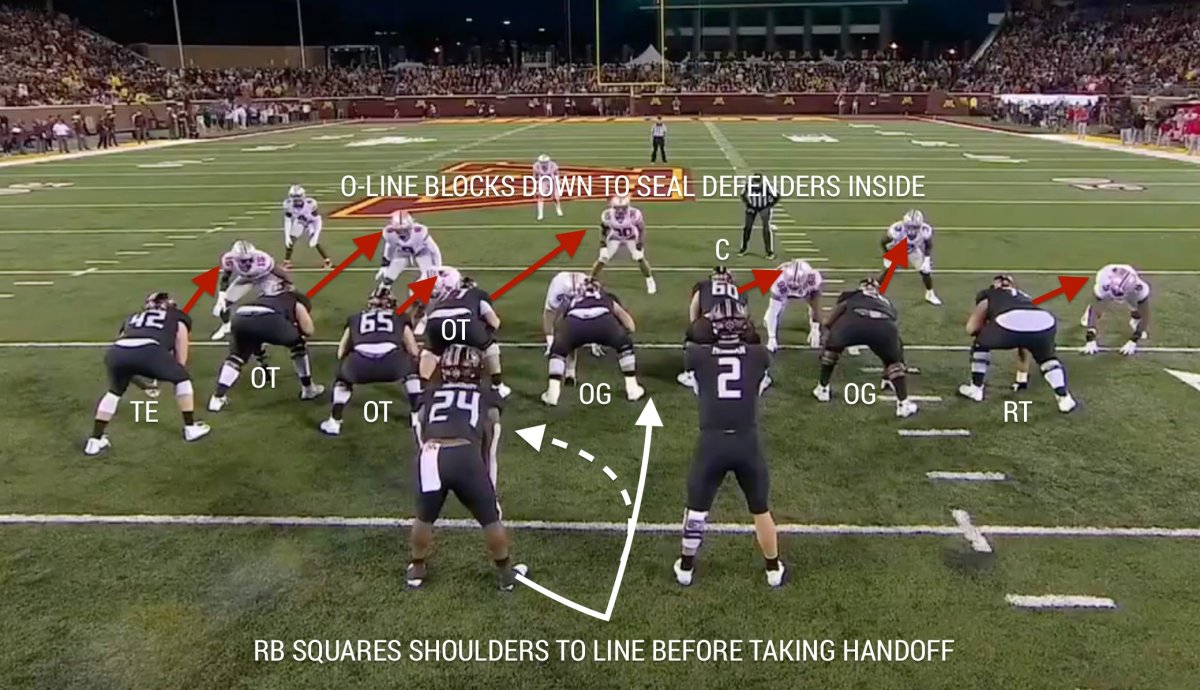
This concept looks similar to a tight zone run and was a favorite of Trey Sermon's last season with the Buckeyes. However, the Gophers are one of the few teams to run the concept from the shotgun, as it requires the back to actually step backward in order to square his shoulders to the line before taking the handoff.
That footwork also gives his linemen time to makes their down blocks on the defense, attacking the outside shoulder of their target and pushing him sideways. When executed properly, the entire defensive front is walled off, allowing the back to bounce the ball all the way outside.
Once there, it's the runner's job to make a defensive back miss, which is exactly what Ibrahim did to poor Lejond Cavasos in the second quarter.
In the second half, the Buckeyes adjusted to these looks by matching the personnel. Kerry Coombs called for his goal-line unit, lining up five defensive linemen with four linebackers to crowd every gap created by Minnesota's massive O-line.
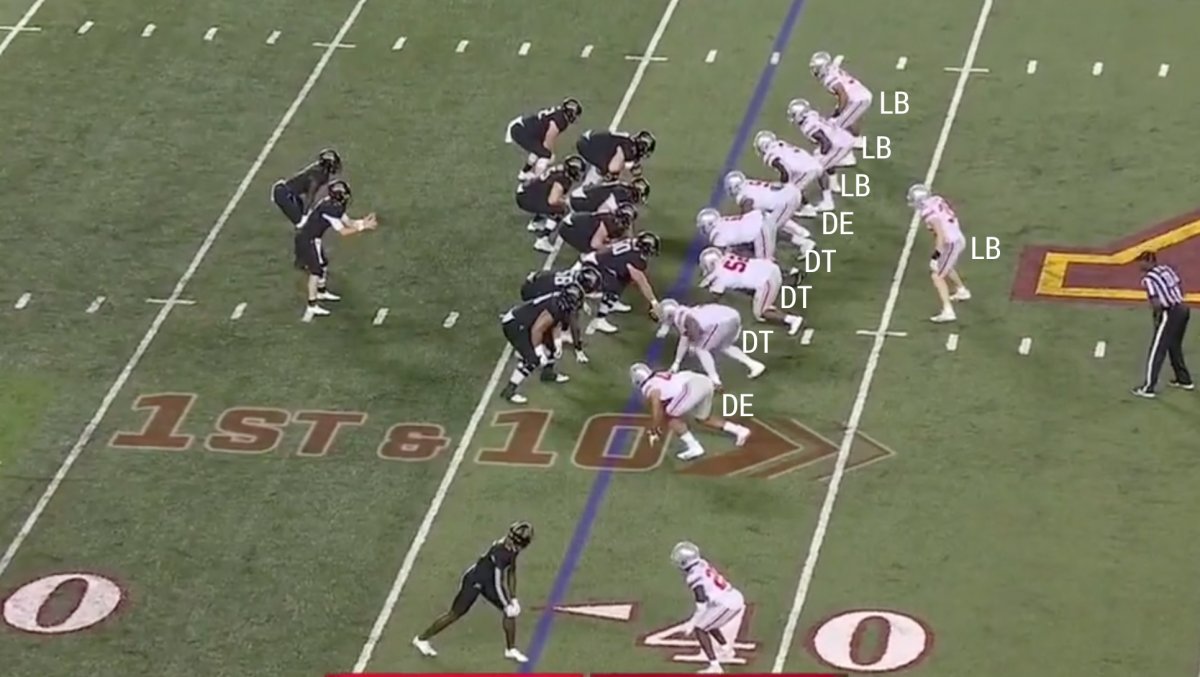
This approach quickly began bearing fruit for the Buckeyes, as the Gophers were held to just 3.16 yards per carry in the second half. It also forced the offense to start digging deeper on the call-sheet, running misdirection plays from that 'Elephant' formation.
By the fourth quarter, though, the Buckeyes' superior speed rendered this unique formation useless, as the Gophers could neither push the defense around nor beat them to the edges. While it might have worked for a while, it's unlikely that another opponent trots out seven offensive linemen in hopes of catching Ohio State off guard.
No Substitute for Experience
Thanks to the additional year of eligibility granted to athletes due to the COVID-19 pandemic, many teams return more starters and overall experience than they're used to this fall. The 2021 Buckeyes are not one of those teams, however.
According to Bill Connelly of ESPN, Ohio State ranks 121st out of 127 FBS teams in returning production this season, returning just 50% of the team's overall production from 2020. Minnesota, meanwhile, ranked 25th in the category, with 80% of its production coming back.
Despite the gap in recruiting rankings between the two sides, the Gophers looked far more comfortable in the first half Thursday night. While everyone knew it was Stroud's first collegiate start, there were seven Buckeye defenders doing the same.
The entire linebacking corps saw playing time for the first time, and it wasn't always pretty. While, as Cody Simon showed above, they eventually got more comfortable, that wasn't the case for much of the evening. SAM linebacker Dallas Gant had a night he'd surely like to forget, missing a number of tackles and negating Josh Proctor's interception with a dubious roughing-the-passer penalty.
But many of the mistakes weren't as obvious. For example, watch the two defenders at the top of the screen in the example below:
The OSU defense is in its base, Cover 3 zone, yet Gant and cornerback Denzel Burke both run with the outside receiver. Gant should have peeled off into the flat, picking up the tight end that motioned across the formation, leaving Burke to take the wideout.
That simple mistake resulted in a 15-yard gain.
Burke and fellow freshman Ryan Watts played the majority of snaps at cornerback after injuries sidelined expected starters Sevyn Banks and Cameron Brown, and the Gophers took advantage early. Minnesota wideout Dylan Brown hauled in a trio of slants in the first half before drawing a pass interference penalty on Burke near the goal-line, setting up the Gophers' second TD.
Watts, meanwhile, committed one of the most obvious interference penalties you'll ever see in the early part of the second half. But by the fourth quarter, the duo looked much more comfortable. Both corners ran well with Gopher receivers and Burke even broke up a pair of passes in the fourth quarter, showing some swagger in the process.
“I think (they were getting) the same vibes that I was getting too, because this was my first start. So, a little anxiousness, a little nervousness, but it’s nervous because we care so much, and I think that they handled themselves well, especially for being their first start, especially Denzel,” safety Lathan Ransom said after the game. “I mean, true freshman out there, really did his thing. I think Ryan Watts had a big play, that huge tackle on that third down, and I think they both played really well and handled themselves really well.”
Their story is quite similar to Stroud's. The young QB hurried some throws and showed some lapses in his throwing mechanics, specifically his footwork. But as the game progressed, Stroud looked far more comfortable and began delivering accurate passes.
“In the first half, my mind wasn’t right, I was kind of all over the place a little bit," he said after the game. "I was talking to my teammates, praying a lot, just trying to lock back in. I don’t feel like I did terrible, but I definitely didn’t do as best as I could in the first half.”
The Buckeyes might have looked overwhelmed at times, but now that the first game is behind them, many of these young players can look forward to the game slowing down the more they play.
“We learned a lot from this experience,” Day told the media following the game. “To say that I’m surprised with the way it played out, I’m not. We played a lot of young guys on the road, conference game, first time playing with fans in a long time. Quarterback hadn’t thrown a college pass before. But the way we rallied and played, especially in that second half, we have a lot to build on here. Very excited coming out of that locker room.”
- #4 Ohio State 45, minnesota 31
- • Ohio State Slugs past Minnesota after A slow start
- • The buckeyes' defensive touchdown changed the game
- • Big plays made the difference for ohio state
- • denzel burke started at corner as a true freshman
- • OHIO STATE POSTGAME • NOTEBOOK • QUOTEBOOK
- • PHOTOS • FIVE THINGS • DEBRIEFING • THREE KEY STATS • SOCIAL REACTIONS
